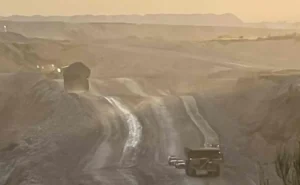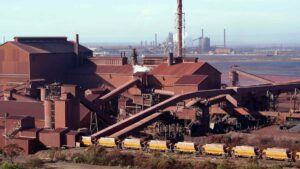The federal government is being urged to act “immediately” to tighten the rules around management of methane emissions, after a major report found Australia lagging well behind international best practice on the measurement and reporting of the potent greenhouse gas.
In a final report on its independent review of the National Greenhouse and Energy Reporting (NGER) Scheme, the Climate Change Authority finds that the accuracy of estimated fugitive methane emissions – mostly from coal and gas projects – “may be” distorted by outdated and “lower order” methods.
The observation follows a separate report from research group IEEFA, in July, which found a massive discrepancy between the methane emissions reported by gas and coal companies in Australia and the actual amount being emitted.
IEEFA found Australian coal miners were underestimating their methane emissions by 81 per cent and gas companies by 92 per cent – a discrepancy that could require a doubling in the rate of emission cuts by 2030 from big emitters.
The findings from the CCA are far less damning, but they confirm that the accuracy of estimated fugitive methane emissions from coal mining and oil and gas operations in Australia, as reported under the NGER scheme, leave a lot to be desired.
“Over the past five years, developments in satellite technologies and inverse modelling techniques have resulted in a new source of data to estimate fugitive methane emissions from individual facilities,” the report says.
“The authority is of the view that the accuracy of estimated fugitive methane emissions reported under the NGER scheme may be impacted due to the use of lower order methods. Simple emissions factors do not adequately capture temporal or spatial specificity or variability at the facility level.”
The acknowledgement has been seized upon by the Australian Conservation Foundation as a first from an Australian government agency – and as due notice that the fossil fuel industry can no longer sweep its methane emissions under the carpet.
“Australia is presently at the back of the global pack when it comes to methane mitigation, with regulations too weak to stop companies releasing methane freely from their facilities,” said ACF methane campaigner Piper Rollins.
“If we can’t work out what our real emissions are, the integrity of Australia’s entire climate action infrastructure – including the safeguard mechanism and the capacity investment scheme – are compromised.
“The good news is the technology and solutions to address Australia’s methane problem already exist and today the Climate Change Authority has given Minister Chris Bowen a compelling reason to immediately put them into action,” Rollins said.
To this end, the CCA identifies a number of improvements to the NGER Measurement Determination to enhance the accuracy of fugitive methane emission measurement, reporting and verification and to align the NGER scheme with international best practice.
These includes the recommendation for the adoption – in some cases, mandatory – of “higher order methods of methane emissions measurement and a policy framework to implement independent verification of facility-level fugitive methane emissions estimates using measurements conducted by reporters, and reported through the NGER scheme.
In a statement issued on Monday, federal climate and energy minister Chris Bowen said his department would work to develop a government response to all of the recommendations – a total of 25 were related to the NGER Scheme, alone – in the CCA’s final report by mid-2024.
“Australia’s emissions measurement and reporting is world leading, and the Albanese Government is committed to ensuring integrity across emissions accounting,” Bowen said.
“That’s why the Safeguard reforms included keys steps to expand transparency with NGER data and the Government is already working with stakeholders on enhancements that can be made to emissions reporting methods.
“We will ensure that any regulatory changes are informed by stakeholder consultation, sound science and best practice.”










